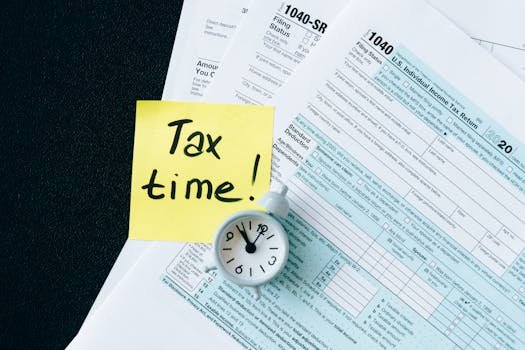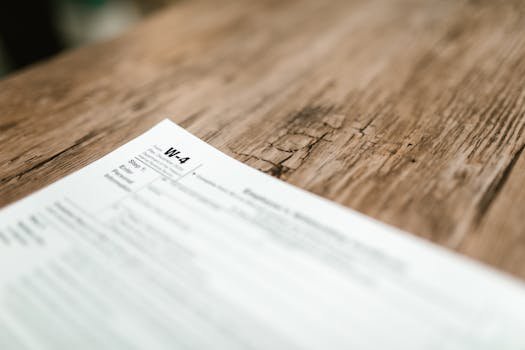Your US Dividend Slip, Demystified
If you’re a non-US investor, the Form 1042-S is your annual “dividend slip” from US sources. It looks bureaucratic, but it’s just a standardized way for your broker (the withholding agent) to tell you—and the IRS—what you earned, what code it belongs to, and how much tax was withheld. Below you’ll find a plain-English tour of each box, the income and exemption codes, a quick-check routine, and what to do if something looks off.
Introduction: What is a 1042-S and why it appears in your inbox
The 1042-S is the IRS form used to report US-source income paid to foreign persons—including dividends from US corporations, certain interest, and other categories—and the withholding applied. If you hold US stocks, ETFs that pay US-source dividends, or interest that’s in scope, your broker will issue a 1042-S so you can (1) reconcile your year’s income, (2) verify that the treaty rate (if any) was applied correctly, and (3) use the numbers for your home-country tax return and any foreign tax credit claim. The form is structured, not scary: it tells you the income type (Box 1), gross amount (Box 2), which chapter of the rules applied (Chapter 3: classic NRA withholding; Chapter 4: FATCA), the rate used (Boxes 3b/4b), and the tax withheld (Box 7a). The IRS publishes both the fillable form and instructions with the official income code and exemption code lists, so you can map your numbers precisely.
For nomads and non-residents, 1042-S is also your paper trail: it pairs with your W-8BEN / W-8BEN-E and, if needed, your tax residence certificate to prove you were entitled to a reduced treaty rate. Keep it with your annual statements and don’t toss it—if something was over-withheld, it’s the key document for a correction or, failing that, a refund claim (1040-NR).
Ensure status matches Basics of W-8BEN-E.
When you’ll receive a 1042-S
Timing (by March 15)
Withholding agents must file 1042-S with the IRS and furnish recipient copies by March 15 of the year following payment (or the next business day if March 15 falls on a weekend/holiday). That means your 2024 income should show up around mid-March 2025. Extensions are possible for issuers (e.g., Form 8809/15397), but unless your broker tells you otherwise, plan on mid-March and chase if it hasn’t arrived.
Action tip: Create a calendar reminder for late February to download year-end statements and again for March 15–20 to grab your 1042-S the moment it’s posted.
Who sends it (broker, withholding agent)
Your withholding agent—commonly your broker or custodian—prepares and sends the form. If you hold US-source assets across multiple platforms, you’ll usually get one 1042-S per platform and income code. The party named in Box 12 is the withholding agent; sometimes a separate payer appears in Box 16 (often the same institution for retail accounts). If you had an intermediary (e.g., an omnibus setup or QI), you may see pooled reporting references, but for a typical individual investor, expect a straightforward “broker issues the form” pattern.
Electronic vs paper delivery
Most modern brokers default to electronic delivery: you’ll get an email and a portal download. Paper copies are still allowed (and common for legacy accounts or if you opted out of e-delivery). Either copy is valid; just save a digital PDF for your records. If you move countries often, double-check your mailing address in the portal so a paper copy isn’t lost in transit.
Form anatomy: understanding the boxes
Box 1: Income code (what type of income)
Box 1 is the Rosetta Stone: it tells you what you were paid. For investors, the most common codes are:
- 06 — Dividends paid by US corporations (general).
- 07 — Dividends qualifying for direct dividend rate (often relevant for certain ownership thresholds).
- 08 — Dividends paid by foreign corporations (US-source).
- 01 — Interest paid by US obligors—general.
There are many others (substitute payments, OID, royalties, etc.). Your broker must use the IRS income code list printed right on the form’s “Explanation of Codes” page. If you got US dividends and don’t see 06, that’s a flag to investigate.
Box 2: Gross income
Box 2 shows the gross amount paid before withholding. For dividends, it should agree (within rounding) with your broker’s year-end dividend report when you sum US-source payments under the same income code and CUSIP/ticker pools the broker uses. “Gross” means no fees or withholding deducted. If you see a net number in Box 2, query support—Box 2 is meant to be gross.
Box 3a–3b: Chapter indicator and exemption code
Box 3 starts the Chapter 3 story (non-US person withholding).
- The chapter indicator is “3” if Chapter 3 applies.
- 3a (Exemption code) is filled only when the tax rate (3b) is 00.00%, and it says why there’s no Chapter 3 withholding—for example, Code 04 = exempt under tax treaty; 02 = exempt under the Internal Revenue Code; 03 = not US-source.
- 3b (Tax rate) is the Chapter 3 rate that actually applied (e.g., 15.00 for a common treaty rate on dividends, 30.00 default, or 00.00 if exempt).
Make sure the exemption code makes sense for your case. If you claimed treaty benefits via W-8BEN, you’ll often see 3a = 04 and 3b = 15.00 (or 00.00 if fully exempt for that income type).
Box 4a: Tax rate (Chapter 4 / FATCA) and exemption code
Box 4 mirrors Box 3 but for Chapter 4 (FATCA). Retail investors commonly see 4a = 15 (payee not subject to Chapter 4 withholding) with 4b = 00.00. Chapter 4 withholding usually isn’t a factor for an individual holding US stocks at a mainstream broker, but if you’re an entity or your account is documented under FATCA rules, the box confirms your FATCA status at payment time.
Box 7a–7b: Federal and state tax withheld
Box 7a is the dollars actually withheld federally. In basic cases, Box 7a ≈ Box 2 × (Box 3b rate), rounded. Box 7b is a checkbox for a special escrow situation (rare for retail), and additional 7c/7d flags exist for partnerships/QI adjustments. If you see state withholding (less common for routine portfolio dividends), you’ll find it in Box 17 with the state name and payer’s state tax number. Cross-check that 7a aligns with your dividend detail export for the year.
Boxes for withholding agent (broker) information
Box 12 identifies the withholding agent (name, EIN, status codes, address). Box 16 may identify a separate payer block. If you’re ever reconciling multiple slips (e.g., you transferred assets mid-year), Boxes 12 and 16 help you match the form to the institution that made the payment.
Income codes explained
Code 06: Dividends from US corporations
Code 06 is the bread-and-butter for stock investors: ordinary dividends from US corporations. It’s the right code for Apple, Microsoft, Coca-Cola, etc. For non-US persons, the default statutory withholding is 30%, unless a tax treaty reduces it—commonly to 15% for portfolio investors. Check that your W-8BEN was on file and that your treaty country was correctly captured; if so, 3b should reflect the treaty rate and 7a the correct dollar amount.
Sanity example: $1,000 of gross dividends coded 06, treaty 15% → $150 in Box 7a. If you see $300, the system likely didn’t apply treaty benefits.
Code 01: Interest
Code 01 covers general interest paid by US obligors (US-source). Some interest types are exempt under the Code or treaties; others are withholdable at 30% by default unless reduced. If you hold US bonds or money-market instruments generating reportable US-source interest, verify whether an exemption applies (3a 02 for certain IRC exemptions, 3a 04 for treaty) with 3b = 00.00 in that case.
Other common codes for investors
Other codes you may see:
- 07 Dividends qualifying for direct dividend rate (corporate ownership thresholds).
- 08 Dividends from foreign corporations (US-source).
- 34 Substitute payments—dividends (e.g., during securities lending/short sales).
- 30/31 OID / short-term OID.
Your broker chooses from the IRS list; if your holdings suggest a different code, ask support to explain the mapping. The official “Explanation of Codes” on the form is the authoritative reference.
Exemption codes and treaty rates
Code 04: Treaty exemption/reduced rate
When Chapter 3 withholding is 0.00% because a treaty fully exempts the payment (or when a reduced rate applies), Box 3a carries an exemption code explaining why. Of interest to most investors: 3a = 04 means “Exempt under tax treaty”. If you claimed treaty benefits via W-8BEN (Part II) or W-8BEN-E, you should see 3a = 04 with 3b reflecting 00.00% (for true exemptions) or a reduced rate (like 15.00%) for ordinary portfolio dividends. The Instructions for Form 1042-S include the complete exemption code list and examples.
How to verify the correct rate was applied
Three checks:
- Country on your W-8 matches your actual treaty residence.
- Your country’s treaty rate for the income type matches Box 3b (e.g., 15.00 for many EU/LatAm countries on code 06 dividends).
- Box 7a ≈ Box 2 × rate (rounded).
If you recently changed countries (and updated your W-8), be aware that the rate applied depends on what was on file when the dividend was paid. If the rate or code looks wrong, ask your broker whether they can correct and issue an amended 1042-S. Use the IRS tables/instructions (and, ideally, your country’s treaty text) for confirmation.
Checking for errors
Wrong withholding rate
Symptoms: 3b shows 30.00 (default) when you expected 15.00 (treaty), or the math in 7a doesn’t match the stated rate. Causes include expired W-8, missing foreign TIN, or a country change not reflected in time. Fix by opening a support ticket with (1) your W-8 confirmation, (2) residency evidence (if the broker requests it), and (3) your own calculation. Ask if they can reissue with corrections. If not, you may consider a refund claim via Form 1040-NR (see below).
Missing treaty benefits
If 3a isn’t 04, but you believe you were entitled, confirm that your treaty country actually has a current treaty (some relationships changed recently, e.g., Hungary and Russia), and that you were a resident under that treaty during the payment period. Then check whether your broker requires a foreign TIN for treaty rates. Update your documentation and ask about a corrected 1042-S going forward.
Incorrect gross vs net amounts
Box 2 should be gross. If you see a net figure, or the totals omit some dividends, reconcile against your monthly statements and the broker’s annual dividend export. If pooled/intermediary reporting is involved, amounts may be split across multiple forms—hence the importance of downloading all 1042-S copies from your broker.
Using the 1042-S for your tax return
Reporting in your home country
Most countries require you to report worldwide income when tax-resident there. Use Box 2 for gross income and Box 7a for US tax withheld. Your home-country return typically has a place to declare foreign income and claim relief (exemption or foreign tax credit). Keep the 1042-S with your return; it’s your official evidence of withholding at source.
Foreign tax credit calculations
If your country offers a foreign tax credit (FTC), you’ll compare US withholding versus your home tax on that same income and claim the lesser amount (rules vary). Since the 1042-S shows gross and withheld amounts, it’s the perfect pair for the FTC computation. If the US rate (e.g., 15%) exceeds your home rate, you may cap the credit and cannot claim a refund from your home country—hence why getting the right treaty rate at source matters.
When you need to file Form 1040-NR
Most portfolio investors don’t need a US return if withholding at source was correct and they have no effectively connected income (ECI). But if you were over-withheld and your broker can’t correct it, you can file Form 1040-NR to seek a refund, using the 1042-S as evidence. Read current IRS instructions (deadlines, e-file availability, refund timing) before you start.
Multiple 1042-S forms: consolidation and record-keeping
It’s normal to receive multiple 1042-S forms if you had different income codes (e.g., 06 for dividends and 01 for interest), or if payments came from more than one broker. Save every form. For your personal summary, create a small table:
- By broker → sum Box 2 and Box 7a
- By income code → check you didn’t miss a smaller slip (like substitute dividends, code 34)
If you transfer positions during the year, splits are common. Keep a master spreadsheet that totals your gross and withheld amounts across slips—this is what you’ll use for your home return and FTC.
Reclaim basics if you were over-withheld
Start with your broker: ask if they can correct your treaty status and issue a corrected 1042-S. If not possible (or if the timeline has passed), the formal route is a refund claim via Form 1040-NR with the 1042-S attached and any supporting documentation demonstrating your treaty eligibility during the payment period. This path takes time; it’s one reason to keep your W-8 up-to-date and consistent with your KYC address and tax residence so the right rate is applied at source.
Conclusion: File it away, but understand it first
Treat your 1042-S as both a receipt and a report. In a few minutes, you can verify the income code, rate, and math, catch a missing treaty benefit, and avoid schlepping a refund claim through 1040-NR months later. Save it with your W-8 confirmation, tax residence certificate, and dividend detail. If something’s wrong, escalate early—before you file in your home country. Once you’ve done it once, next year’s 1042-S becomes routine.
Printable “First-Time 1042-S” Checklist
- ☐ Download every 1042-S from each broker/platform.
- ☐ Confirm Box 1 matches the income (e.g., 06 for US dividends).
- ☐ Box 2 equals your gross income (before withholding).
- ☐ Chapter 3: If you claimed a treaty, 3a = 04, 3b = treaty rate (often 15.00).
- ☐ Withholding math: 7a ≈ 2 × rate (rounded).
- ☐ Chapter 4: Usually 4a = 15 (“not subject”) and 4b = 00.00 for retail setups.
- ☐ Save with W-8, residence certificate, monthly dividend exports.
- ☐ If wrong: open a broker ticket asking for correction/amended 1042-S.
- ☐ If not fixable: consider 1040-NR refund claim with the 1042-S attached.
Keep it in the pack per Records That Travel; residency doubts? Residence vs Tax Residence.



